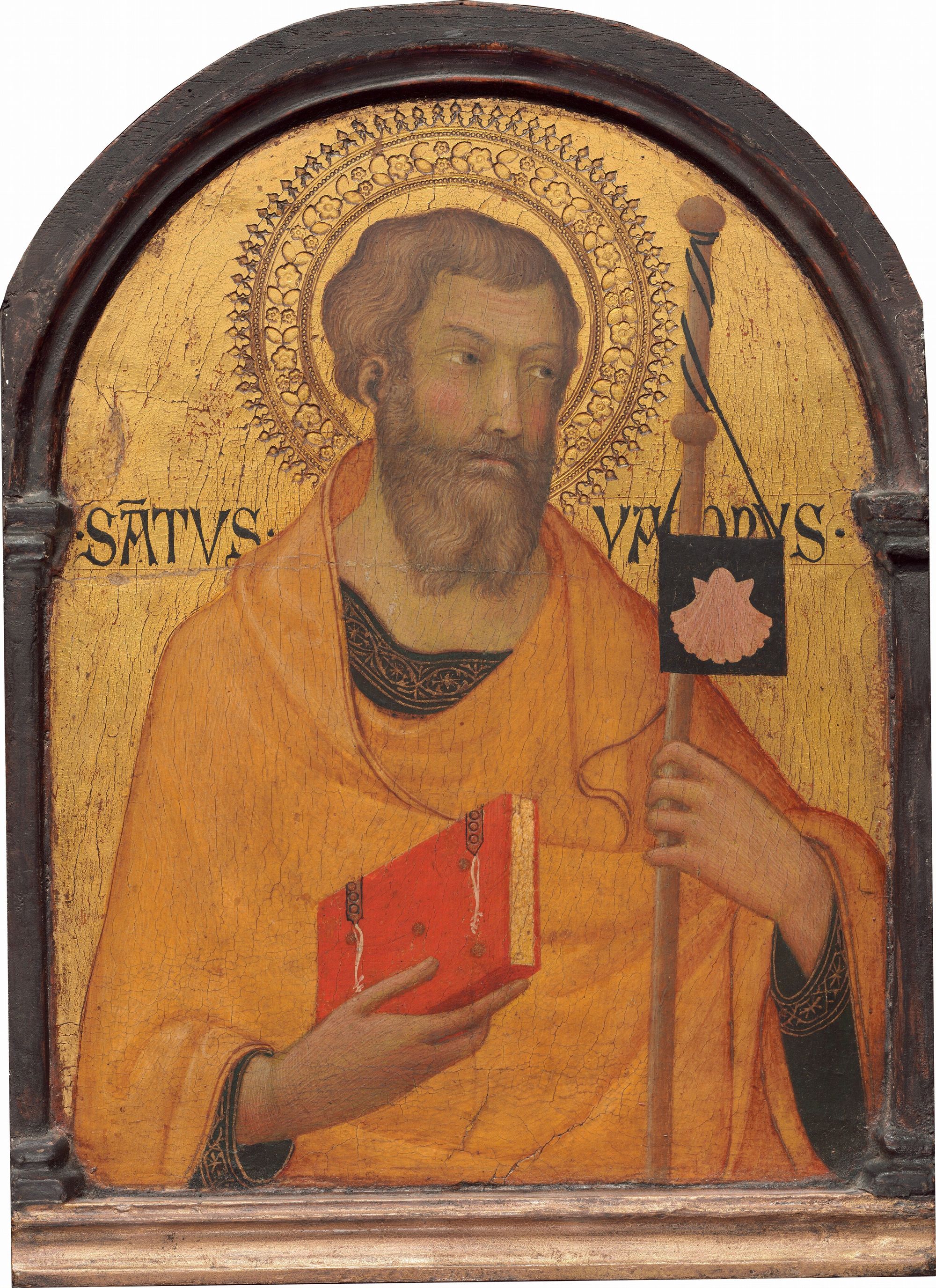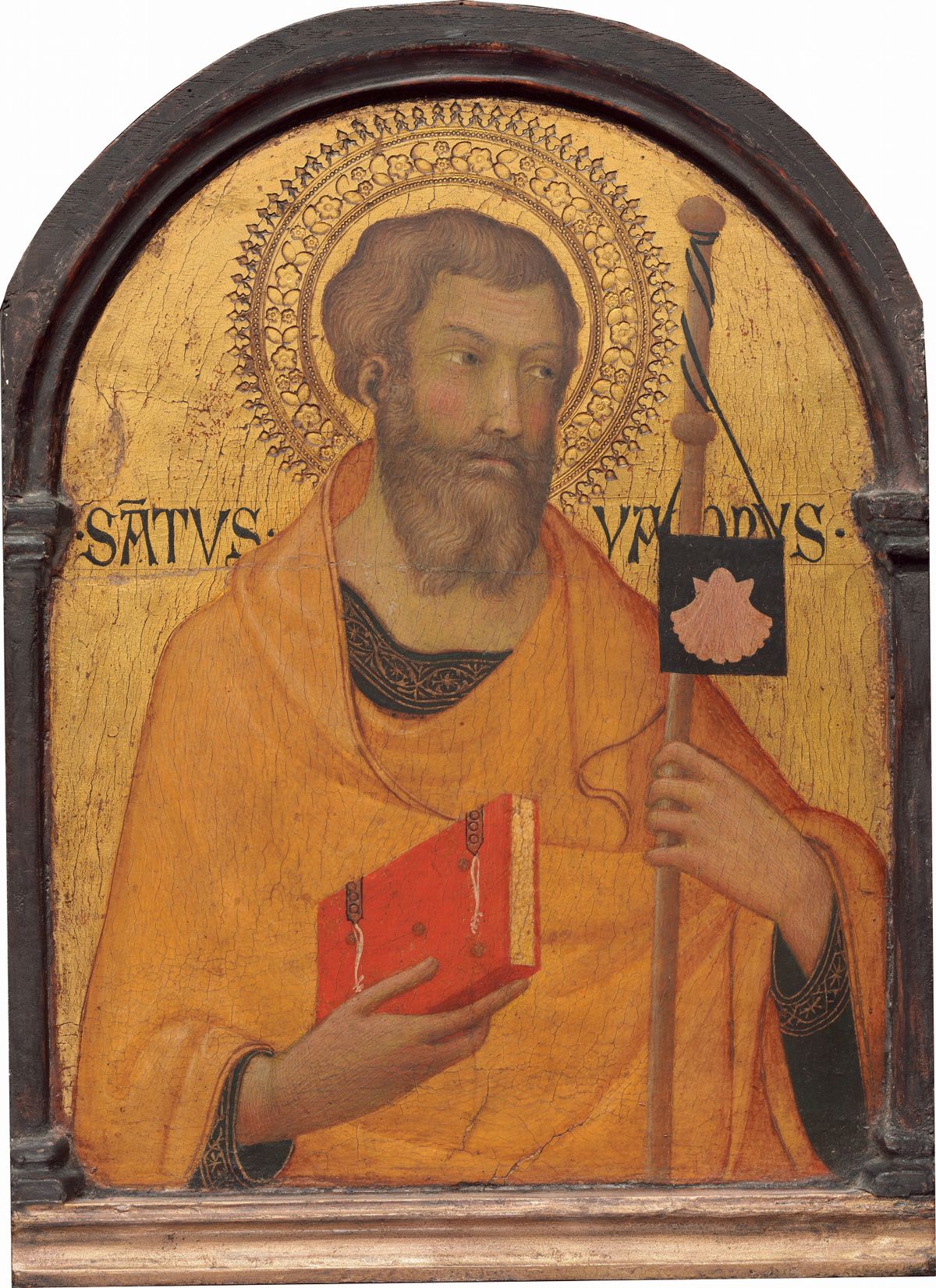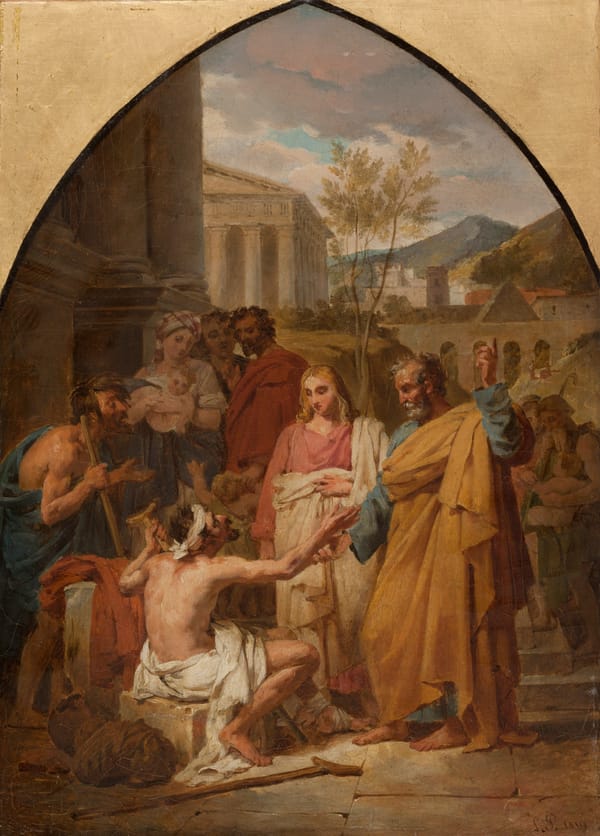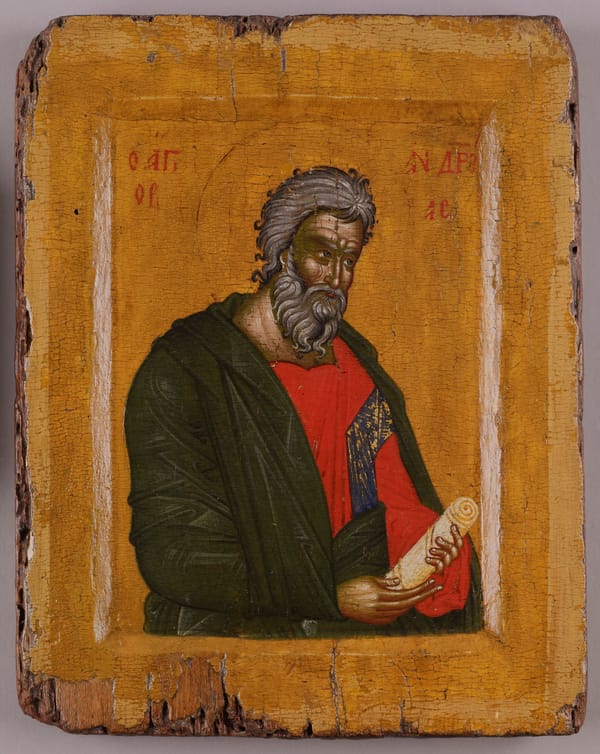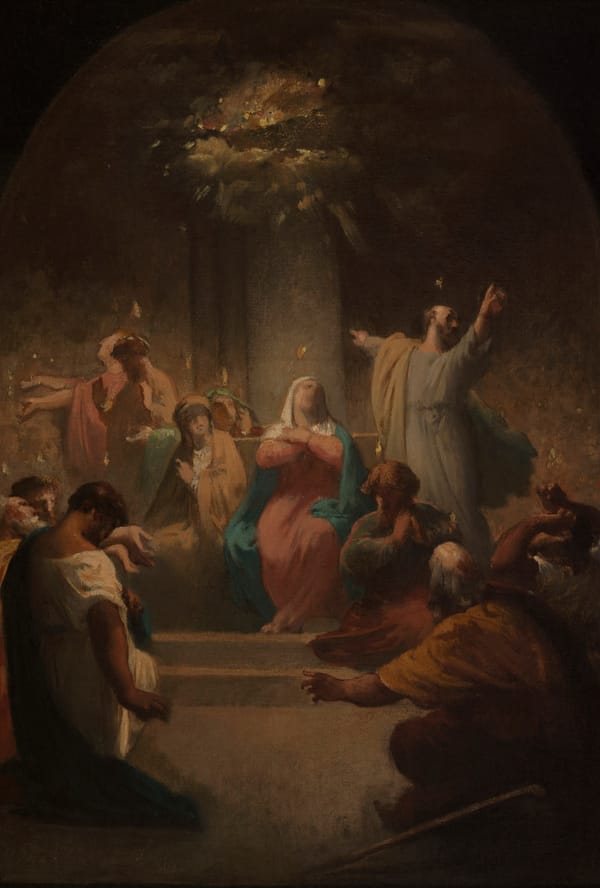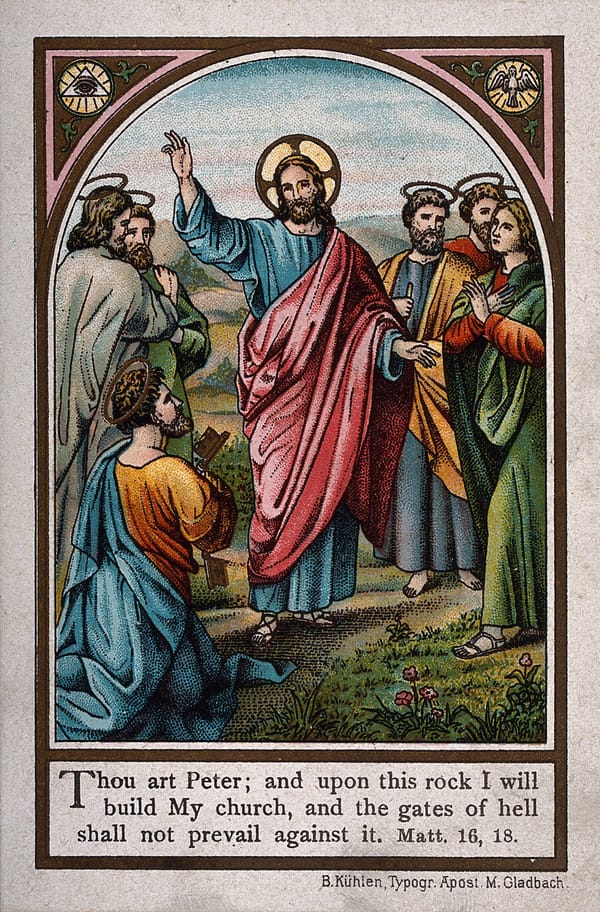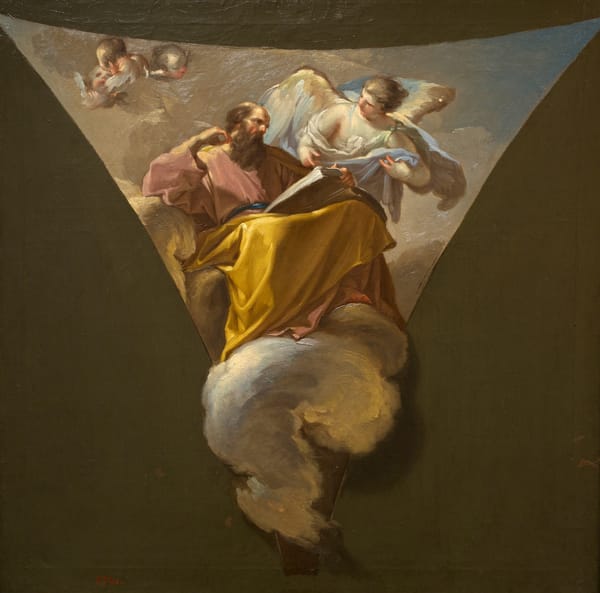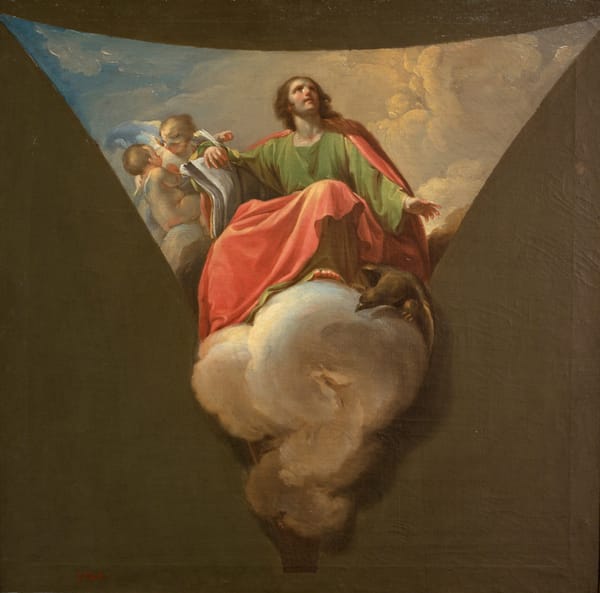This small panel once decorated the predella of an altarpiece along with nine other small portraits of apostles, three of which are in the collection of the National Gallery of Art: Saint Matthew, Saint Simon, and Saint Judas Thaddeus. The brother of the apostle John, Saint James Major was in Jesus’s innermost circle, and one of three witnesses to the Transfiguration and Jesus’s agony in the garden of Gethsemane. He was also the first apostle to be martyred, put to death by King Herod (Acts 12:2) just 15 years after he was called by Jesus to serve. But by the time Simone Martini painted this work, another aspect of James’s legend dominated his iconography. He is shown here as a pilgrim, with a scallop-shell banner decorating his walking staff. James Major was said to have preached in Spain, and his body (or that of a man he rescued) was said to have been pulled from the sea covered with scallops. During the Middle Ages, his shrine in Santiago de Compostela in northwestern Spain was one of Europe’s most important pilgrimage destinations.
Simone Martini (Sienese, active from 1315; died 1344) probably trained in Siena with Duccio di Buoninsegna (Sienese, c. 1250/1255 - 1318/1319), and by the time he painted the apostle portraits, he had become one of Europe’s leading artists. Simone displays his delight in sinuous, calligraphic line along the edges of the saint’s hood and tunic. Delicate coloration and almond eyes are also marks of Simone’s hand. His reputation earned the patronage of Robert, king of Naples and Anjou, and the pope, then installed in Avignon, in southern France. Through Simone, the brilliant color and rich patterning of Sienese painting met the graceful, lyrical figures of French Gothic, a marriage that evolved to become the international style, a refined and courtly manner that dominated all of the arts across Europe at the end of the Middle Ages.
Free Downloads Below
Hi-Res
1200px
800px
